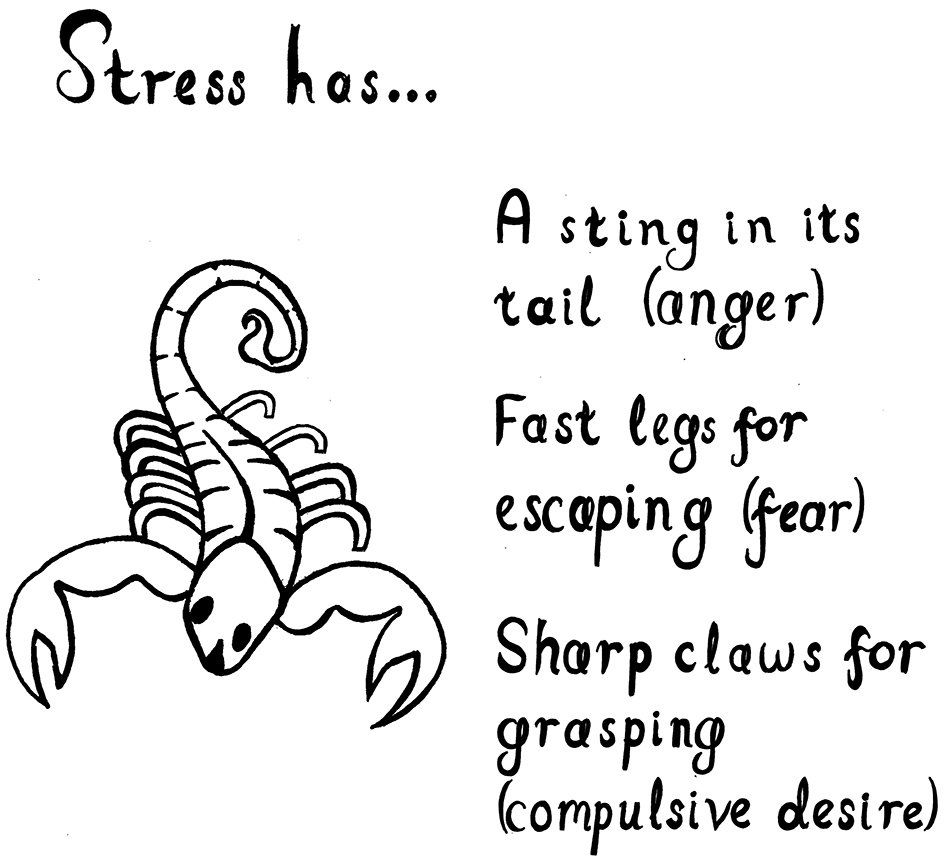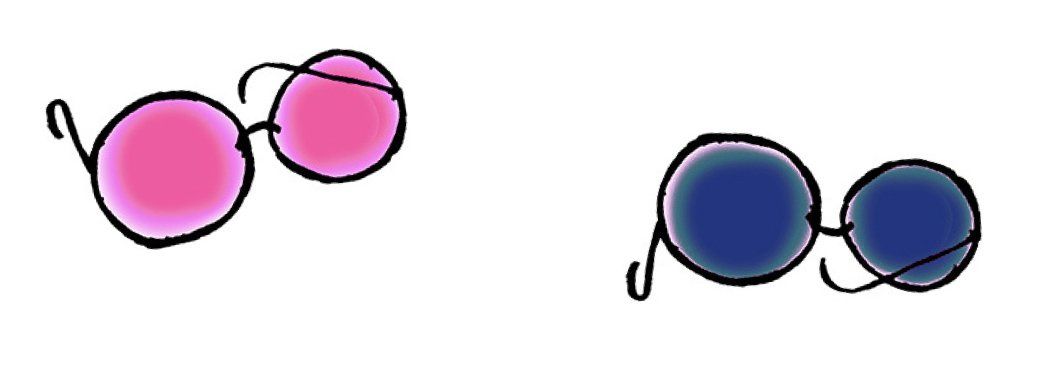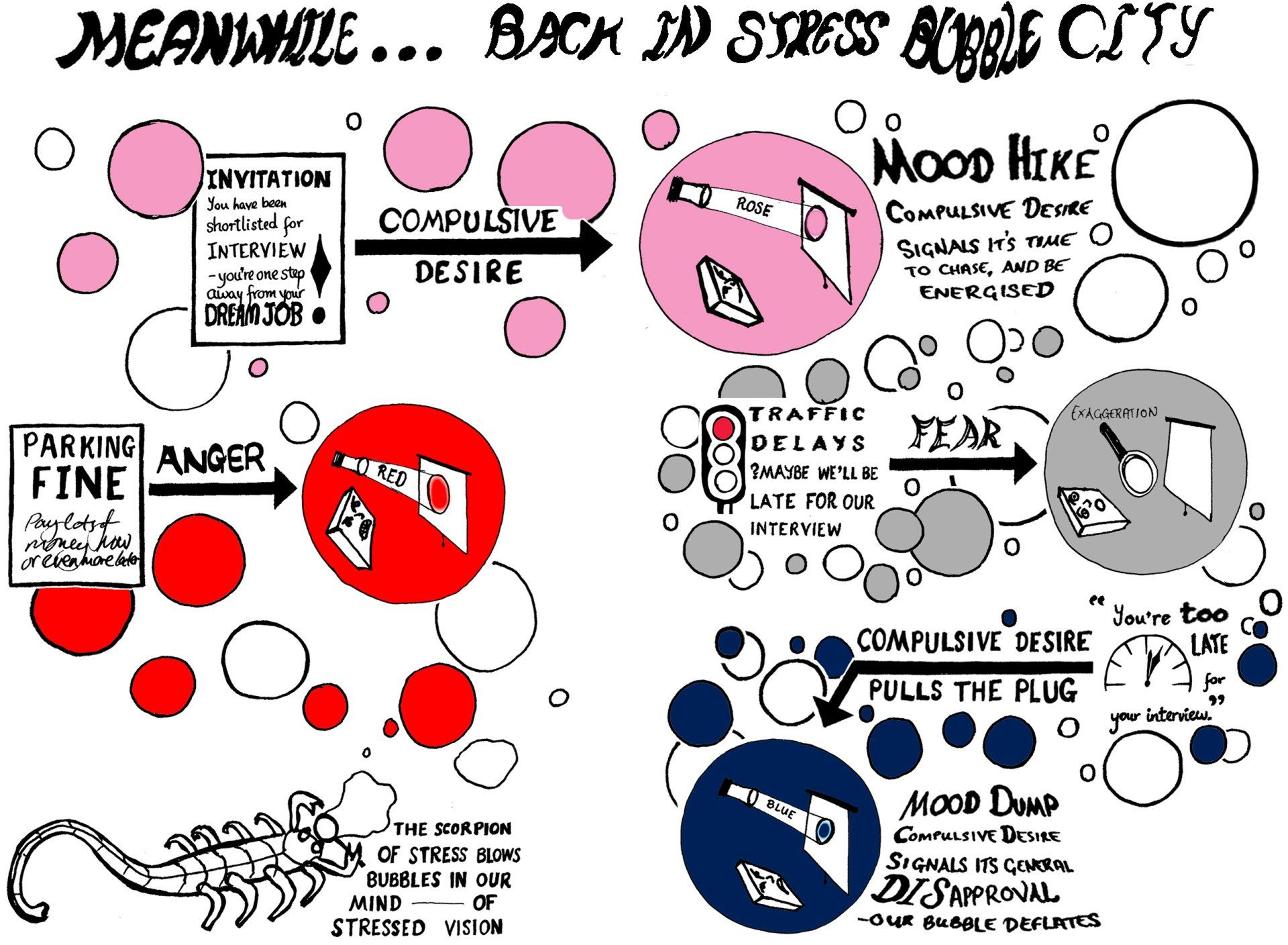Stress and Illness
|
Creativity and Health
Stress
| Stress Forces
|
Visualising Stress
|
"Stress Bubble City"
|
Altered Perception
|
"Gloom"
|
Freedom from Stress
^ Introduction
Stress is easy to underestimate as a source of harm. It is also easy to misunderstand.
Stress can appear to come entirely from the world outside
of ourselves, whereas it's through forces housed within
us that stress ultimately "gets to us"; forces we're all very familiar with, such as fear
and anger
.
Fear
and anger
can make us so distressed as to be "beside ourselves with rage", "scared out of our wits" or "frightened out of our skin" - unrecognisable to ourselves, in other words.
These same forces can also be highly contagious, as where they "infect" a whole culture. Therefore, anger
can steer the whole social group towards trigger-happy blaming and scapegoating, or even hate, contempt and violence.
Fear
, meanwhile, can make us readily intimidated and vulnerable to being exploitated and bullied.
Serving as a kind of opposite to fear
, compulsive desire
makes certain “desire objects” seem so appealing that we become “driven to distraction” in our quest to make them ours.
“Stress forces” like anger
, fear
and compulsive desire
can be very damaging. To name a few examples:
- out-of-control anger
can nearly double the risk of fatal cardiovascular disease; while,
- fear
can lead to disorders like anxiety and phobia; and,
- compulsive desire
can enslave us to an addiction.
^ Stress Forces
“Stress forces” like fear
can take command at a time of survival crisis, even if that means their “seizing control of our steering wheel”, whether fear
or anger
(when we’re in danger), or compulsive desire
(when there's some “survival asset” we need to grab).
Being potentially so essential to our survival, fear
, anger
and compulsive desire
come packed with enormous force. The same can be said about creative forces like joy, but these don't obliterate our free will and self-control in the way fear
and anger
can. Emotions that lack the compulsive quality of fear etc.
- even "negative" emotions like (non-depressive) sadness - cannot take us over as completely as anxiety, addiction, aggression or depression ( "see below").
This is to explain the use of the term “stress force” in preference to “emotion” for the likes of fear
and anger
.
^ Visualising Stress
The simple act of survival sometimes owes itself to a switch in our biology - over to “stress mode” - to leave us a little like a scorpion:

As such, we can find ourselves equipped with the “snatching claw” of compulsive desire
for making us cling onto persons and things that can bring us survival benefit; and with the “fleeing legs” of fear
and the “stinging tail” of anger
for highlighting survival “threats” to escape or fight.
Now, we have the equivalent of an "onboard autopilot" that navigates us around our stressful days, one that responds to given "stressors" in ways that push and shove and "bounce" us around, our life reinvented as a stress-hyped drama.
^ Altered Perception
The "stress forces" of compulsive desire
, fear
and anger
change the whole way we see and understand reality.
Anger
, for example, makes us “see red”, so “the red mist descends” and we fly at whichever neighbours it wishes to have sent crashing through the garden fence.
Fear
sounds alarm at its targets, and has them look so scary that we run away.
Then there's compulsive desire
, that fixes us with “rose-tinted spectacles”, and imparts an alluring sparkle to the “objects” it sets for us to chase.
All of which brings us to another "stress force", because “rose-tinted spectacles” can quickly turn blue on some occasion when we fail in our efforts to win someone or something. Now, we might find "the sky seem to fill with rain clouds" as our mood plummets.

^ "Gloom"
When we fail to turn “desire objects” into conquests, the sparkle dust and excitement generated by compulsive desire
can collapse.
In other words, we can be more than merely deserted by compulsive desire
when we fail a “mission” to secure some “survival asset” (a partner or a home, for example). Rather, the neural pathways behind compulsive desire
(notably those reliant on dopamine) can power down so abruptly that the "forward gear" of compulsive desire
shifts in an instant to "reverse".
This reverse gear can be treated as a whole “stress force” in its own right, one that can be called "gloom"
.
When gloom
becomes active, compulsive desire’s
rose-tint dayglow goes up in smoke. The ficklest of mistresses is this compulsive d.
, that now dumps us at the side of the road... by flipping into gloom
, its complete antithesis.
Click here for more about the biology behind the neurobiology of pleasure and its opposite
Find out about the "Four Steps To Freedom from Stress"
Find out about the "Four Steps To Freedom from Stress"
[Nb this website is not a replacement for professional help where needed.]

